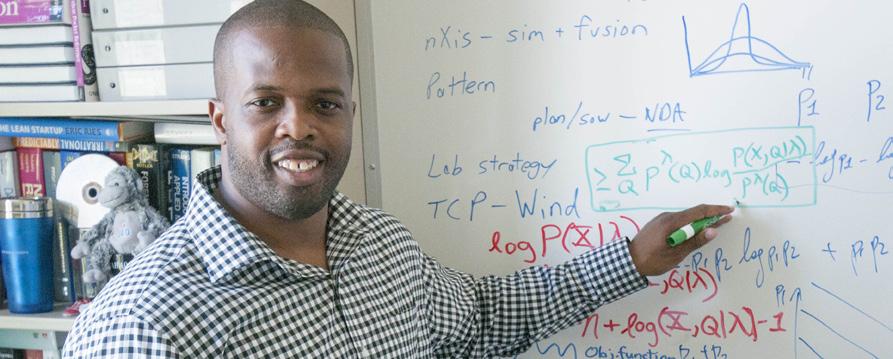
3 minute read
8 Tips to Build Your Data Science Career
INNOVATION MUSIC + M TH = P edro Pastrana-Camacho graduated from the University of Puerto Rico with a bachelor’s degree in computer science. He earned another bachelor’s degree in math, with a minor in music from Purdue University, as well as a master’s in computer science. How did he change his career and gain skills in data science?
Pedro Pastrana-Camacho was about 10 years old when he started playing the cuatro Puertoriqueño—the national instrument of Puerto Rico.
At that age, Pedro didn’t give much thought as to why the music sounded so good or the complex geometry in the humming of the strings. But no doubt about it, he was skilled in the scales and patterns of the Caribbean folk guitar. Thanks to the music, Pedro won a scholarship to University of Puerto Rico, where he earned dual bachelor degrees in computer science and mathematics.
After graduation, he chose Purdue University in Indiana to do a master’s degree in computer science.
Three and half years ago, Pedro joined General Electric (GE) and translated his skills in computer science into a whole new career.
Pedro’s work in different GE businesses included gathering large data sets in health care, and on the performance of large commercial aircraft engines. Seven months ago, he joined GE Research’s Software Systems and Patterns Factory Lab, where he designs and develops software.
“In my current position as a computer scientist, I work with a team which focuses on building an analytical eco system. This eco system will give domain experts the tools to develop, share, and update analytical models for GE’s assets across the company,” Pedro explains.
In other words, each engine has a digital copy that helps in data collection. The data helps make better predictions of an engine’s performance, when a turbine’s likely to fail, when it’s time to do repairs, and helps reduce flight delay and cancellations due to airline equipment issues.
Pedro said he first started writing software. Next, he discovered AI or artificial intelligence, and then it was machine learning, natural language processing, and privacy, which help solve data problems.
“Having those set of skills at GE, I found out I was prepared in a way,” Pedro added. “And how math and machine learning are used in an industrial scale.
“There’s no specific set of classes,” he continued. “However, software engineering, computer science, programming, software development, the design and study of algorithms, algebra, and domains of math are common themes.
“At GE, math is the language in which engineers and scientists communicate because we’re building analytical models,” he said
Once you’ve checked off all those courses and requirements, Pedro says the fun part is how you use all that knowledge together to make something useful, and create analytical models and business strategies.
In his spare time, Pedro works with students in the 10-week GE INSPIRE program and interns. He is also planning a personal AI assistant.
To apply for the GE Inspire Program’s Internet of Things Generation, visit https://sites.google.com/site/ highschoolinternships/local-progrm/ ge-inspire. S 8 tips: How to prepare for a data science job by Lango Deen, ldeen@ccgmag.com 1 Learn about everything that excites you, even something others consider simple or trivial. You never know what you can bring. 2 Aspire to go big by connecting your skills to benefit a community or a larger group of people. 3 Focus on critical thinking and problem solving rather than equations. 4 Use Open course software and collaborate on open source projects. 5 Sign up for online courses like Coursera. 6 Write software that reflects how much you care and how passionate you are about your work. 7 Build and invent physical prototypes integrating hardware like RaspberryPi, Arduino, little bits, and software. 8 Understand technical work in engineering, analytics, and business impact, to culture and people, and most importantly how each one of them affects the others. PEDRO’S 8 TIPS:








